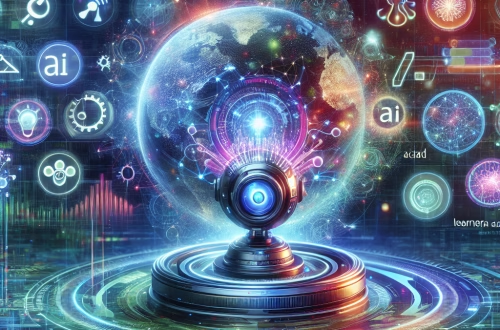Summary:
ChatGPT 3.5 and GPT-4 are two of OpenAI’s most advanced language models, but they differ significantly in capabilities, accuracy, and use cases. GPT-4 offers improved reasoning, better contextual understanding, and enhanced multimodal support compared to ChatGPT 3.5. While ChatGPT 3.5 remains a powerful tool for general AI interactions, GPT-4 excels in complex problem-solving, nuanced responses, and handling longer inputs. Understanding these differences helps users choose the right model for their needs, whether for casual conversations, professional applications, or research.
What This Means for You:
- Better Accuracy and Reliability: GPT-4 reduces errors and hallucinations compared to ChatGPT 3.5, making it more reliable for research, coding, and professional writing. If accuracy is critical, upgrading to GPT-4 is advisable.
- Enhanced Context Handling: GPT-4 supports longer conversations (up to 32,000 tokens in some versions) and retains context better. For tasks requiring deep analysis, such as legal or technical documents, GPT-4 is the superior choice.
- Multimodal Capabilities (GPT-4 Only): Unlike ChatGPT 3.5, GPT-4 can process images alongside text, opening new possibilities in data analysis, education, and content creation. If your work involves visual data, explore GPT-4’s image recognition features.
- Future Outlook or Warning: While GPT-4 is more advanced, it may still produce inaccuracies or biased outputs. Users should verify critical information independently. As AI evolves, staying informed about model updates and limitations will be essential.
ChatGPT 3.5 vs. GPT-4: What’s New and What’s Improved?
1. Performance and Accuracy
GPT-4 significantly outperforms ChatGPT 3.5 in reasoning, factual correctness, and nuanced understanding. Benchmarks show GPT-4 scoring higher on standardized tests, including the SAT, GRE, and bar exams. It also reduces “hallucinations” (false information generation) by refining its response logic.
2. Context Length and Memory
ChatGPT 3.5 typically handles around 4,096 tokens (roughly 3,000 words), while GPT-4 extends this to 8,192 tokens in standard versions and up to 32,000 in GPT-4 Turbo. This allows for deeper, more coherent long-form discussions.
3. Multimodal Capabilities
GPT-4 introduces image recognition (though not yet available in ChatGPT interfaces), enabling tasks like analyzing graphs, interpreting handwritten notes, or describing visual content. ChatGPT 3.5 remains text-only.
4. Language and Creativity
GPT-4 produces more natural, context-aware responses and excels in creative writing, poetry, and technical documentation. It adapts tone and style more effectively than ChatGPT 3.5, making it ideal for professional content creation.
5. Speed and Cost Efficiency
ChatGPT 3.5 is faster and more cost-effective for simple queries, while GPT-4, though slower, provides higher-quality responses. Free-tier users typically access ChatGPT 3.5, while GPT-4 requires a subscription.
6. Limitations and Weaknesses
Both models can generate incorrect or biased information, but GPT-4 mitigates this with better safeguards. However, neither model has real-time internet access by default, limiting up-to-date information retrieval.
People Also Ask About:
- Is GPT-4 worth the upgrade from ChatGPT 3.5?
Yes, if you need higher accuracy, deeper analysis, or multimodal support. For casual use, ChatGPT 3.5 remains sufficient. - Can GPT-4 understand images?
Yes, GPT-4 can process images, but this feature is not yet widely available in consumer-facing applications like ChatGPT. - Does GPT-4 have better memory than ChatGPT 3.5?
Yes, GPT-4 retains context over longer conversations, reducing repetition and improving coherence. - Is ChatGPT 3.5 being phased out?
Not immediately, but OpenAI is prioritizing GPT-4 development, meaning future updates may focus on newer models.
Expert Opinion:
Experts caution that while GPT-4 represents a leap forward in AI capabilities, users must remain critical of its outputs. The model still inherits biases from training data and can make errors in high-stakes scenarios. As AI adoption grows, ethical considerations, transparency, and continuous model refinement will be crucial to ensuring safe and effective use.
Extra Information:
- OpenAI’s GPT-4 Research – Official details on GPT-4’s architecture and improvements.
- MIT Technology Review on GPT-4 – A breakdown of GPT-4’s advancements over previous models.
Related Key Terms:
- ChatGPT 3.5 vs GPT-4 performance comparison
- GPT-4 multimodal capabilities explained
- Is GPT-4 more accurate than ChatGPT 3.5?
- GPT-4 Turbo vs standard GPT-4 differences
- How to access GPT-4 for professional use
Check out our AI Model Comparison Tool here: AI Model Comparison Tool
#ChatGPT #GPT4 #Whats #Whats #Improved
*Featured image provided by Pixabay





